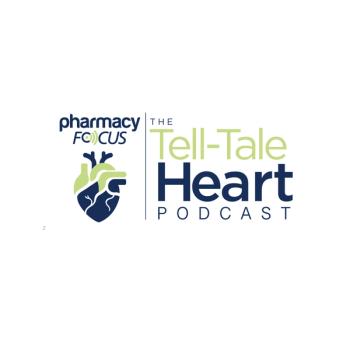
Experts Recommend Diabetes Screenings for Overweight Adults Beginning at Age 35
In addition to early screening, counseling patients on preventive interventions can reduce the risk of developing prediabetes or type 2 diabetes.
Overweight adults should be screened for diabetes beginning at 35 years of age, according to an updated recommendation from the US Preventive Services Task Force. The new recommendation is 5 years earlier than previous recommendations.1
The new recommendation cited CDC data that approximately 13% of all US adults have diabetes and 34.5% meet criteria for prediabetes. Of those with diabetes, 21.4% were not aware of or did not report it, and only 15.3% of those with prediabetes reported being told by a health care professional that they meet the criteria.1
“Clinicians can prevent serious health complications by screening adults with overweight or obesity for prediabetes and diabetes,” said task force member Chien-Wen Tseng, MD, MPH, MSEE, in the press release. “With appropriate screening, diabetes can be detected and treated earlier to improve overall health.”2
Estimates of the risk of progression from prediabetes to diabetes vary greatly, and the authors said this could be because definitions of prediabetes differ. A large cohort study of 77,107 patients with prediabetes reported that the risk for developing diabetes increased with higher hemoglobin A1C levels and with higher body mass index.1
Diabetes also has significant risks for other conditions. For example, it is the leading cause of kidney failure and new cases of blindness among adults in the United States and is associated with increased risks of cardiovascular disease, nonalcoholic fatty liver disease, and nonalcoholic steatohepatitis. It was also estimated to be the seventh leading cause of death in the United States in 2017.1
Because of these risks, earlier screening is essential. According to the recommendation, screening asymptomatic adults for prediabetes and type 2 diabetes may allow earlier detection, diagnosis, and treatment, with the ultimate goal of improving health outcomes. The recommendation applies to nonpregnant adults between 35 and 70 years of age who have overweight or obesity and no symptoms of diabetes.1
Overweight and obesity are the strongest risk factors for developing prediabetes and type 2 diabetes in adults, according to the recommendation. Other risk factors include older age, family history, history of gestational diabetes, history of polycystic ovarian syndrome, and dietary and lifestyle factors. Furthermore, the prevalence of diabetes is higher among American Indian and Alaska Native individuals, Asian populations, Hispanic/Latino populations, and non-Hispanic Black populations.1
Prediabetes and type 2 diabetes can be detected by measuring fasting plasma glucose or HbA1C levels, or with an oral glucose tolerance test. Criteria for type 2 diabetes include a fasting plasma glucose level of 126 mg/dL or greater, an HbA1C level of 6.5% or greater, or a 2-hour postload glucose level of 200 mg/dL or greater. Criteria for prediabetes include a fasting plasma glucose level of 100 to 125 mg/dL, an HbA1C level between 5.7% and 6.4%, or a 2-hour postload glucose level of 140 to 199 mg/dL.1
In addition to early screening, counseling patients on preventive interventions can reduce the risk of developing prediabetes or type 2 diabetes. Lifestyle interventions focused on diet and physical activity, as well as medication interventions such as metformin, have demonstrated efficacy in preventing or delaying diabetes progression in individuals with prediabetes, although metformin has not been approved by the FDA for this indication.1
In the Diabetes Prevention Program study, researchers found that lifestyle interventions were more effective than metformin in preventing or delaying diabetes. Furthermore, lifestyle interventions can have a beneficial effect on weight, blood pressure, and lipid levels. Although metformin has a beneficial effect on weight, it does not appear to affect blood pressure or to consistently improve lipid levels.1
“Fortunately, there are interventions that are effective for preventing prediabetes from progressing to diabetes and in helping people with prediabetes improve their health,” said task force vice chair Michael Barry, MD, in the press release. “The task force encourages clinicians to screen adults over age 35 with overweight or obesity and work with them to determine if an intervention is needed.”2
REFERENCES
1. US Preventive Services Task Force. Final Recommendation Statement: Screening for Prediabetes and Type 2 Diabetes. August 24, 2021. Accessed August 27, 2021.
2. Task Force Issues Final Recommendation Statement on Screening for Prediabetes and Type 2 Diabetes. News release. US Preventive Services Task Force; August 24, 2021. Accessed August 27, 2021.
Newsletter
Stay informed on drug updates, treatment guidelines, and pharmacy practice trends—subscribe to Pharmacy Times for weekly clinical insights.


















































































































































































































